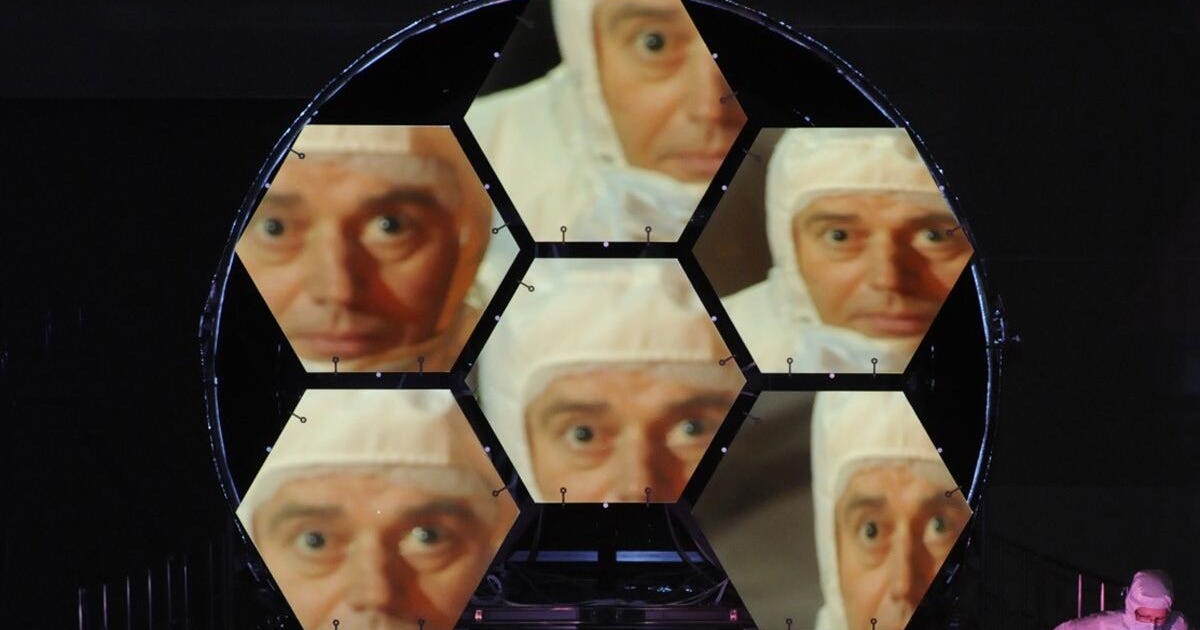
When the James Webb Space Telescope launched on Christmas Day, space fans jumped aboard the Just-Launched-Telescope rollercoaster, holding their breath along with the world’s astronomers.
After decades of planning, engineering, tinkering, launching… finally, Webb was on its way to space. But launch was just the beginning. This $10 billion machine would have to unfold and then get through months of testing and checkpointing. The odds seemed, on paper, almost insurmountable. But Webb is safe and sound (besides a tiny ding from a micrometeorite) and it has been casting its powerful eye across the universe.
On Monday, President Joe Biden will be on hand as NASA releases the first of several scientific images taken by the gold-plated, exoplanet-hunting, stardust-piercing, black hole-seeking JWST. Here’s how you can follow along.
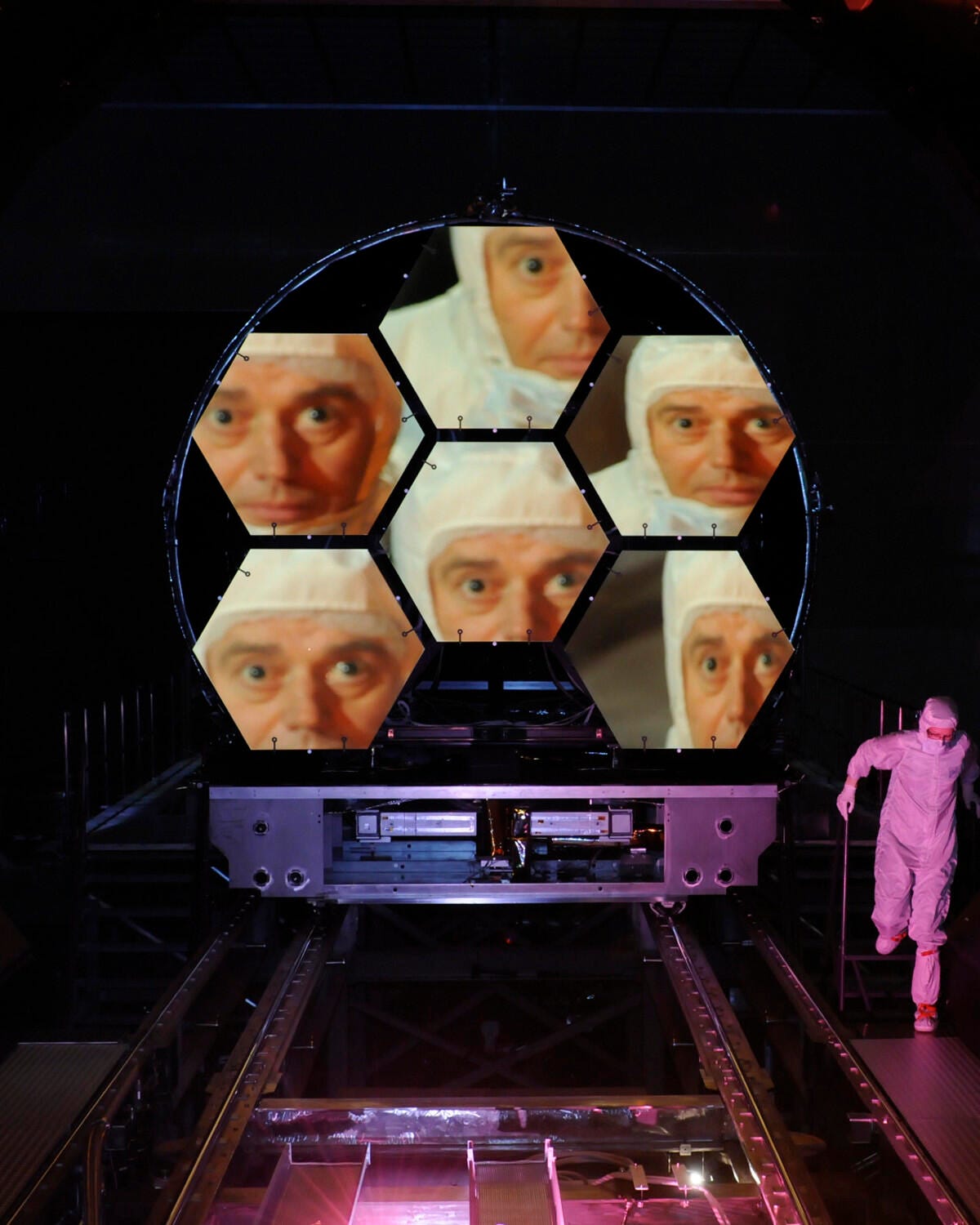
Project scientist Mark Clampin is reflected in the flight mirrors at Marshall Space Flight Center during JWST’s construction.
Ball Aerospace
How to catch the first JWST images
A preview event is taking place at the White House, in Washington D.C., on Monday, July 11. NASA Administrator Bill Nelson will also be in attendance. The event is scheduled to start at 2 p.m. PT (5 p.m. ET). You can watch the reveal live on NASA TV just below or you can head straight to NASA’s Webb-site (how has no one thought of this yet?) and bathe in the glow of the first image.
Once that’s all said and done, there will be an impatient wait for the second batch of images to drop.
That will happen on July 12, when the JWST team will host a main event to unveil the telescope’s images in real time, starting at 7:30 a.m. PT. You can also tune in a little earlier (around 6:45 a.m. if you’re up) to catch the opening remarks on NASA TV, too.
Here’s that time around the world.
- US: 7:30 a.m. PT / 10:30 a.m. ET
- Brazil: 11:30 a.m. (Federal District)
- UK: 3:30 p.m.
- South Africa: 4:30 p.m.
- Russia: 5:30 p.m. (Moscow)
- UAE: 6:30 p.m.
- India: 8:00 p.m.
- China: 10:30 p.m.
- Japan: 11:30 p.m.
- Australia: July 13, 12:30 a.m. AEST
Also, be sure to check out CNET Highlights, our YouTube channel, for all the big moments.
Can I take a private tour of JWST’s first images?
Yup. If you’re not a huge fan of live unveilings and would rather take it all in without pomp, NASA will also post JWST’s first full-color images and spectral data online here. Adding to the drama, the agency says these pictures will be released “one by one.”
Edge of our seats, folks.
You can also say hello to your new screensaver, wallpaper, home decor and personalized coffee mugs by downloading high-resolution versions of JWST science discoveries and other supplemental content.
What should we expect from JWST’s first images?
By now, you might have seen a few preliminary JWST pictures. I know I’ve spent quite a bit of time musing about them. But they’re not exactly the scope’s “first images.”
In short, NASA has to get through a total of 17 testing “modes,” which can be thought of as checkpoints, prior to booting up the telescope. And as the agency has been making its way down the list, we’ve been blessed with a bunch of luminescent, red-orange peeks into JWST’s eventual vision.
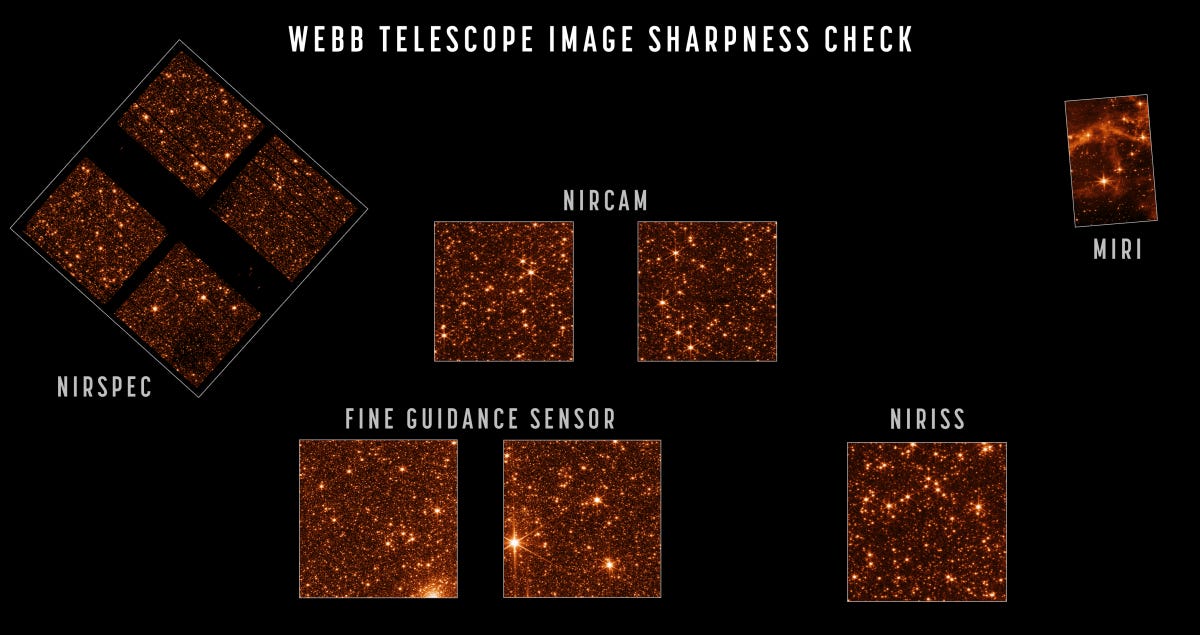
You can see an image from all of Webb’s major instruments in this collage.
NASA/STScI
However, these are pretty much the products of calibrating all the telescope’s instruments — which you can read about in more detail here — not the finalized, highly anticipated conglomerate images scientists are calling JWST’s “first light.”
But in a press conference held on June 29, NASA members who’ve already caught a glimpse of JWST’s true first light said they were absolutely blown away and almost moved to tears.
“What I have seen moved me, as a scientist, as an engineer and as a human being,” Pam Melroy, NASA’s deputy administrator, said.
We do have an idea of what NASA has decided to look at. The five targets for James Webb were revealed on July 8 and include a nebula, a galaxy cluster and even an exoplanet. We don’t have a lot more information than that just yet but what’s certain is that it will be monumental.
That’s because JWST operates differently than other high-tech telescopes, including Hubble. It uses what’s known as infrared imaging to show us a region of the universe we can’t see with our naked eye — and even Hubble can’t see with its ultra-powerful lens. Other space telescopes can see in infrared, but none are as powerful as Webb.
A 3D rendering of how James Webb look in space, fully deployed.
NASA’s Goddard Space Flight Center Conceptual Image Lab
What you need to know about infrared imaging
In a nutshell, JWST’s infrared imaging instruments collaborate to detect light emanating from a region of the electromagnetic spectrum that’s invisible to human eyes — the infrared region. This area of the spectrum is vital for mapping the timeline of our universe, but has sort of been missing in previous observations.
As stars and galaxies move farther and farther away from us, the wavelengths of light they emit continuously stretch out like a rubber band being pulled. Eventually, they get so stretched out that they reach into the infrared region of the electromagnetic spectrum. And, because the universe is constantly expanding, the oldest, rarest, probably most valuable stars — and things illuminated by those stars — only show up to us as infrared light.
So, we can’t see those super far away, really ancient cosmic bodies with our eyes — or even a regular telescope lens, for that matter — even if we squint until our faces hurt and hope until our faith begins to dwindle.
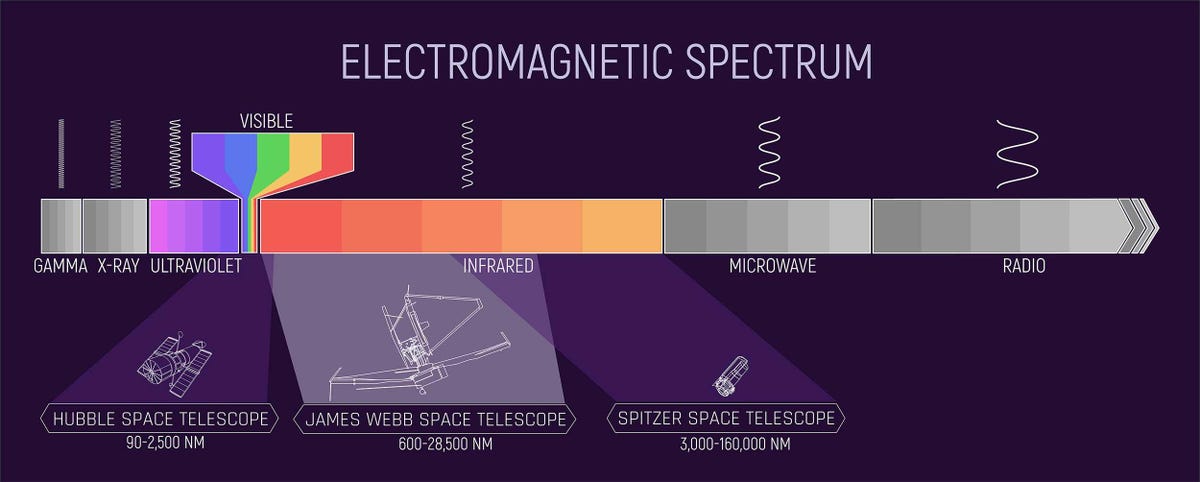
This infographic illustrates the spectrum of electromagnetic energy, specifically highlighting the portions detected by NASA’s Hubble, Spitzer, and Webb space telescopes.
NASA and J. Olmsted [STScI]
When JWST looks up at the sky, however, it can show us all that infrared goodness. It will illuminate for us all the stars, galaxies, quasars, black holes and maybe even exoplanets poised to hold life that we can’t see. You can read more about the infrared mechanism here — but basically, think of it as the difference between looking up at the stars from a light-saturated New York City, then again from a dark forest glen.
Amid the dense foliage, you’d see a whole lot more sparkles even though it’s the same sky. You’re just viewing it unfiltered by light pollution. JWST takes this to the next level… times a million. It’s armed to show us an unfiltered universe.
Hubble has a few infrared detection capabilities, but not nearly as much as JWST. Other space probes, such as the 1989 Cosmic Background Explorer have technically studied a greater distance into the universe than JWST will — but JWST “was designed not to see the beginnings of the universe, but to see a period of the universe’s history that we have not seen yet,” John Mather, senior project scientist for the James Webb Space Telescope, said.
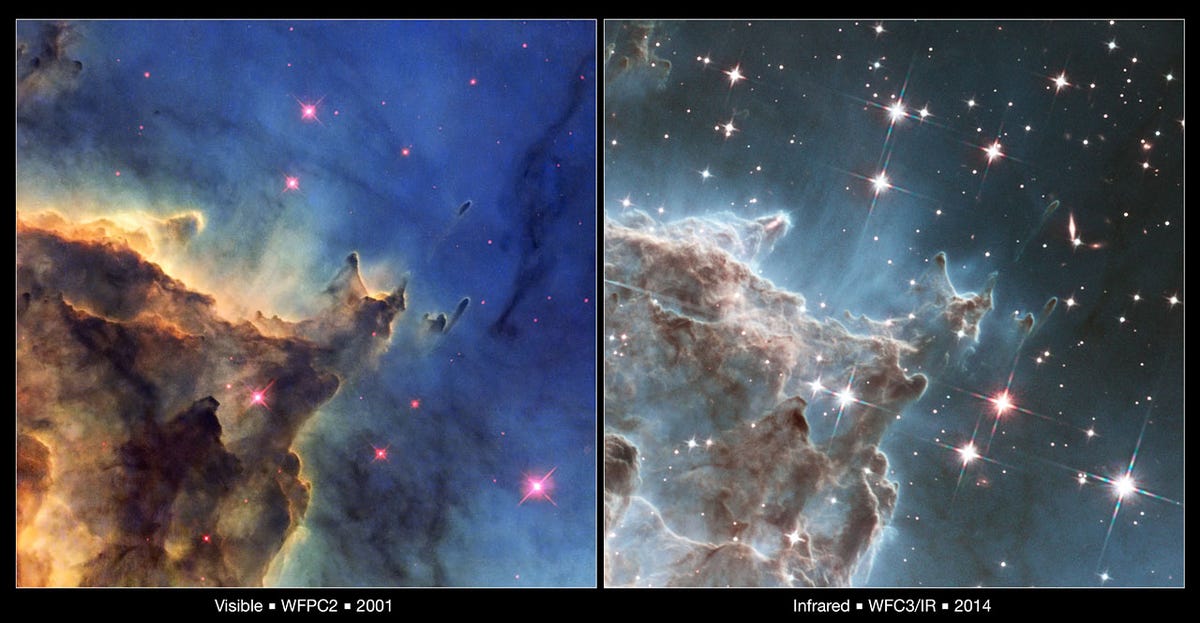
A comparison of Hubble’s visible and infrared views of the Monkey Head Nebula. While Hubble has some infrared capabilities, it’s nothing compared to Webb.
NASA and ESA
Potentially, understanding that missing piece of the cosmic puzzle could help us know whether we have the Big Bang’s story correct, how far the universe truly extends and, one day, maybe even show us whether there’s life out there. Or prove to us that we’re alone.
The possibilities are endless, but they’ll begin to spool out on July 12. Until then, here’s NASA’s JWST first light countdown.
Updated July 11: Added information about first image release.
